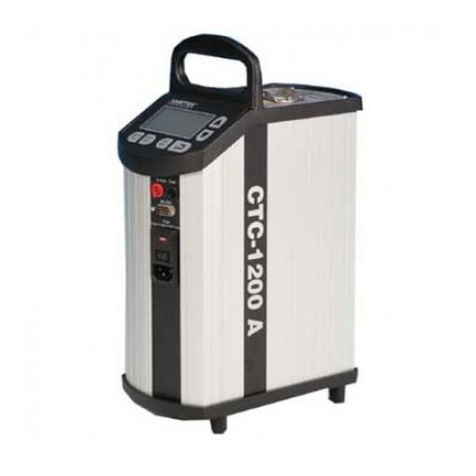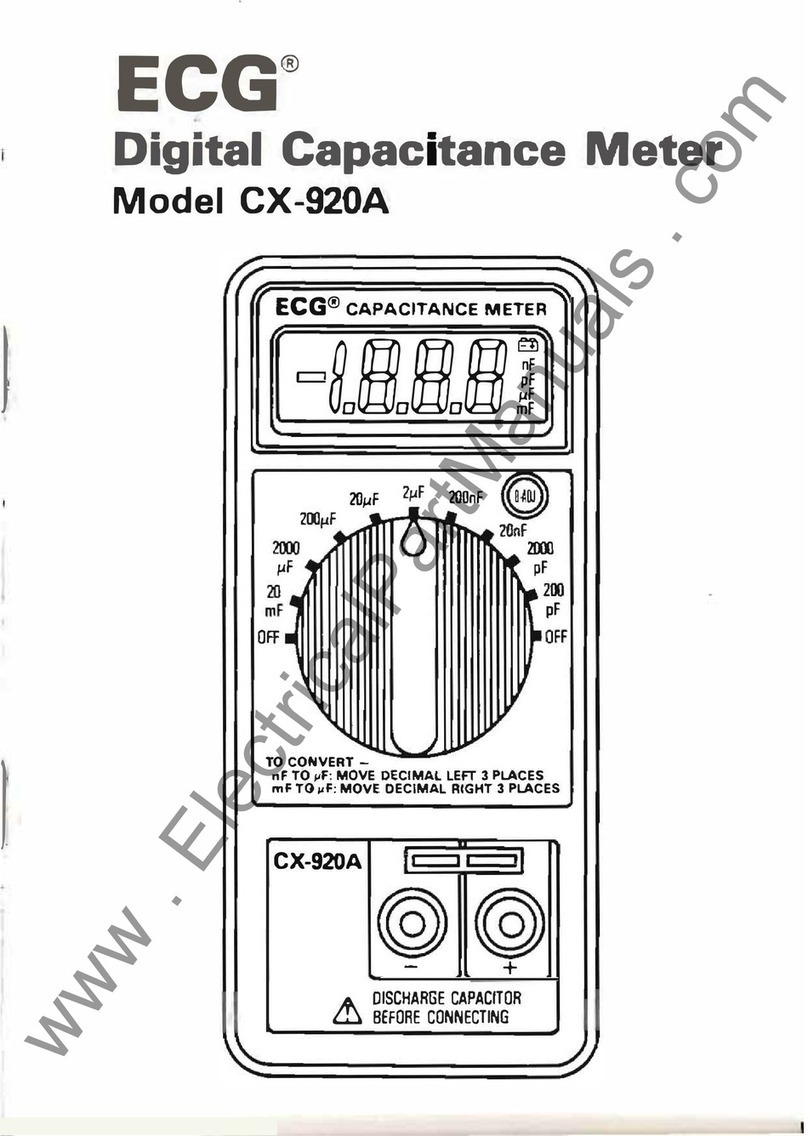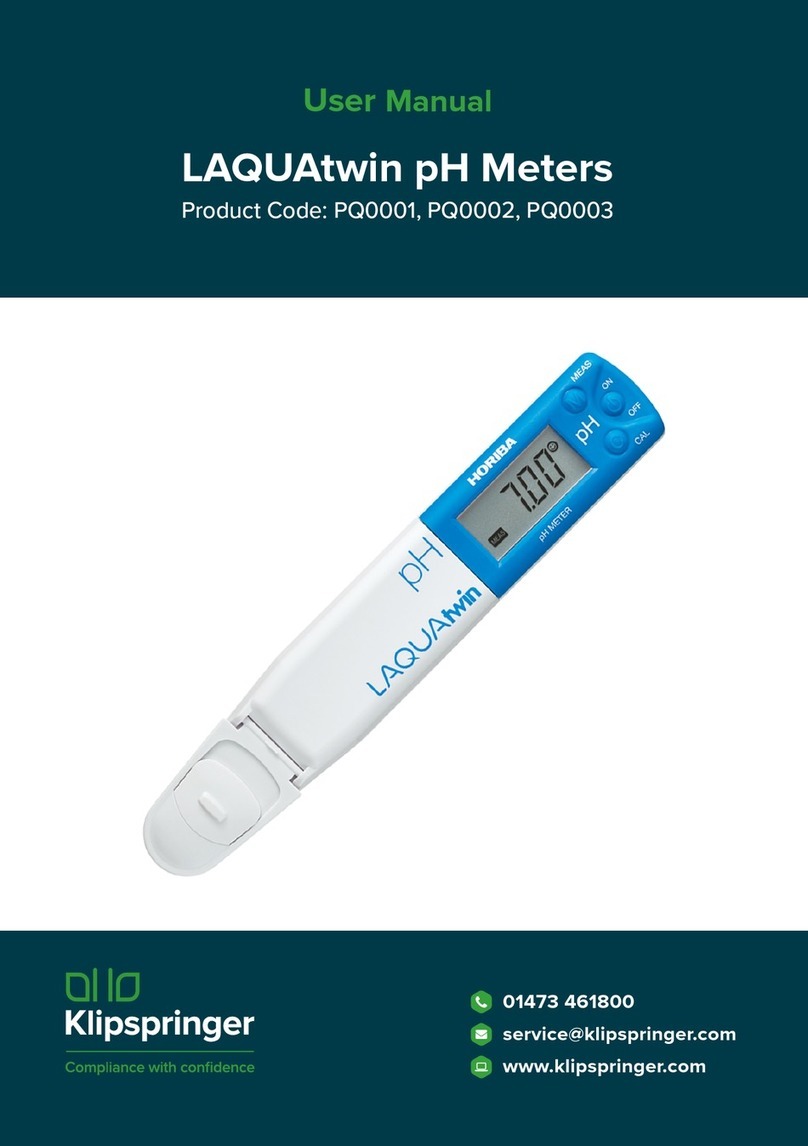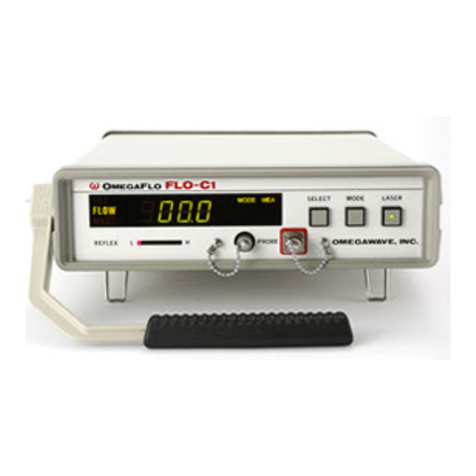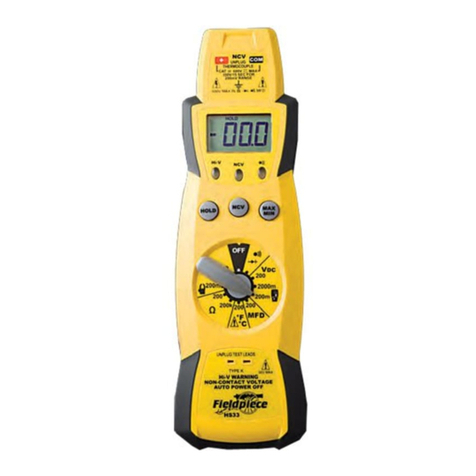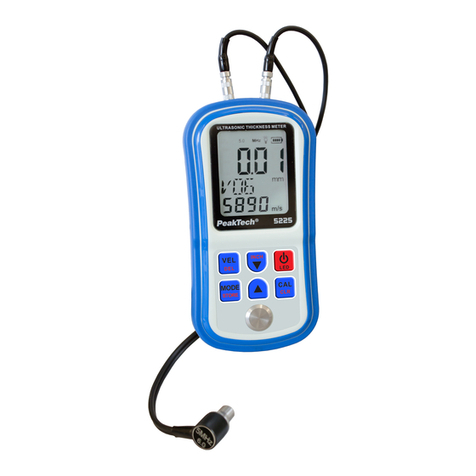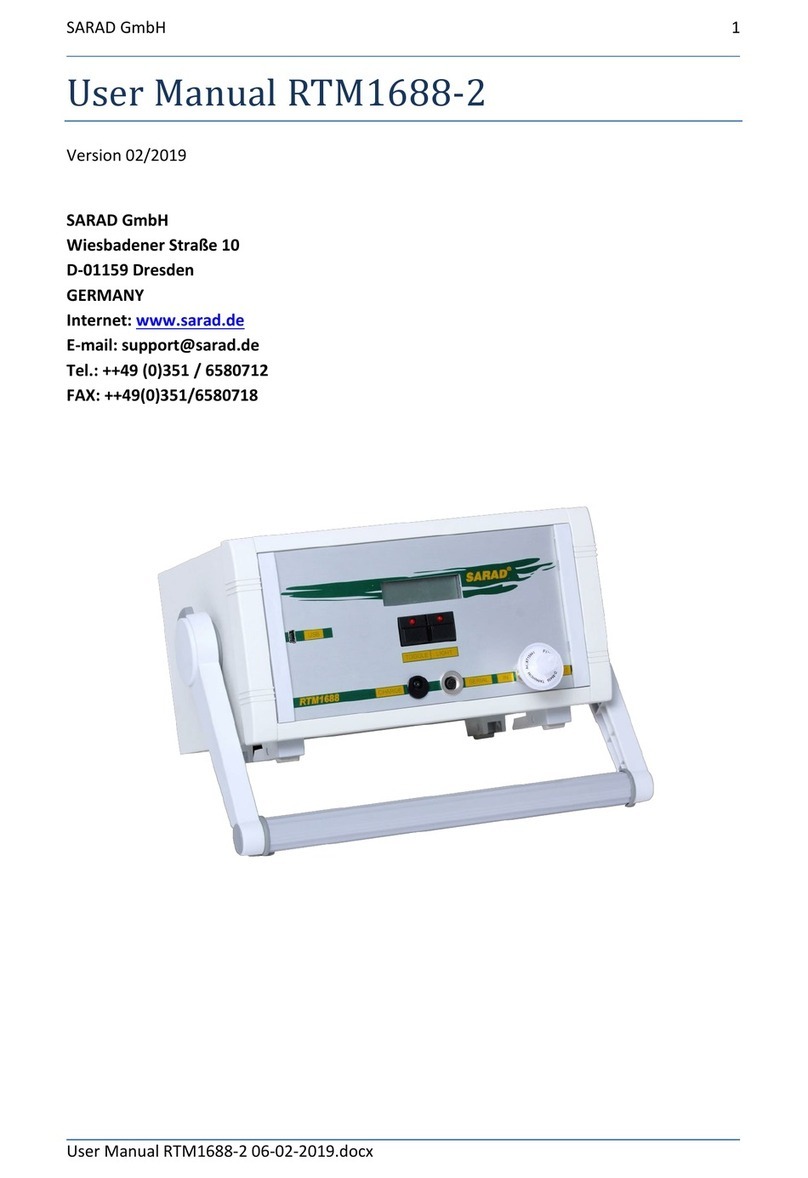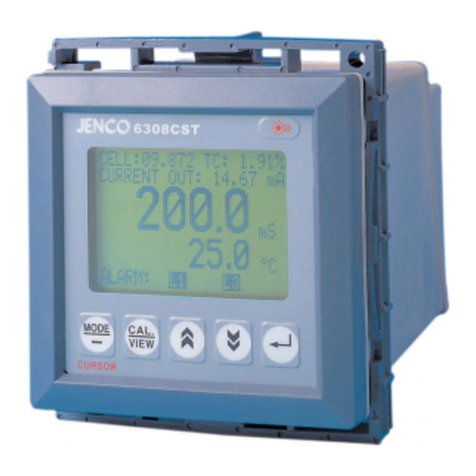Telecast New Viper User manual

New Viper
™
Instruction Manual
Telecast Fiber Systems, Inc.
102 Grove Street
Worcester, MA 01605
Tel: 508-754-4858
Fax: 508-752-1520
www.telecast-fiber.com


Viper
iii
TelecastViper
Table of Contents
Laser Safety ..................................................................................................................................... ix
Laser Radiation ..................................................................................................................... ix
FCC Part A Notice .......................................................................................................................... ix
CE Warning..................................................................................................................................... ix
Introduction.......................................................................................................................................1
Applications..................................................................................................................................2
Unpacking..........................................................................................................................................2
Components.......................................................................................................................................3
Portable Mussel Shell Chassis......................................................................................................4
Rack Mount Chassis .....................................................................................................................4
Removing the Rack Mount Adapters......................................................................................4
I/O Function Modules...................................................................................................................4
Auxiliary I/O Board......................................................................................................................5
Wavelength Division Multiplexer ................................................................................................5
WDM Installation ...................................................................................................................6
Power Systems...................................................................................................................................7
Internal..........................................................................................................................................7
Battery Pack............................................................................................................................7
Audible Alarm ........................................................................................................................8
External.........................................................................................................................................8
Anton-Bauer............................................................................................................................8
Power Connections............................................................................................................................8
Input Power Fuse ....................................................................................................................9
Main Circuit Boards .....................................................................................................................9
Signal I/O....................................................................................................................................10
Status Indicators....................................................................................................................10
Connector Numbering Conventions .....................................................................................10
Chassis Configuration ....................................................................................................................11
VIM4 ..........................................................................................................................................11
VIM8 ..........................................................................................................................................12
442 ..............................................................................................................................................13
V800D ........................................................................................................................................14
Signal Connections..........................................................................................................................15
Audio ..........................................................................................................................................15
Video ..........................................................................................................................................16

Telecast
iv
1 April 99
Optical Fiber ...............................................................................................................................16
Transmission Fiber Ports ......................................................................................................17
Military Connectors .......................................................................................................17
Fiber Cable Runs...................................................................................................................18
Connecting a Fiber................................................................................................................19
Function Modules ...........................................................................................................................20
TX/RX 103: Analog Video.........................................................................................................21
TX 103 Video Transmitter....................................................................................................21
RX 103 Video Receiver ........................................................................................................21
Return Video ..................................................................................................................22
TX/RX 259: Digital Video .........................................................................................................23
TX 259 Transmitter...............................................................................................................23
RX 259 Receiver...................................................................................................................24
TX/RX 292: High Definition Video...........................................................................................24
TX 292 Transmitter...............................................................................................................25
RX 292 Receiver...................................................................................................................26
TX/RX 280 and TX/RX 380: Digital Audio ..............................................................................26
TX 280 Transmitter...............................................................................................................29
RX 280 Receiver...................................................................................................................30
TX/RX 380 Audio Expansion Modules................................................................................30
TX 380 Transmitter...............................................................................................................31
RX 380 Receiver...................................................................................................................31
TX/RX 380 Address Switches .......................................................................................32
TR 260 Transceiver...............................................................................................................32
The Auxiliary Option..................................................................................................................33
Auxiliary Submodule Boards................................................................................................33
Mounting the Auxiliary Submodule Board ....................................................................34
Audio Module Removal .................................................................................................34
Audio Module Installation .............................................................................................34
DATA/CCU ..........................................................................................................................34
TALLY/CALL......................................................................................................................34
Intercom Modules.......................................................................................................................36
4-Wire...................................................................................................................................36
Clear-Com.............................................................................................................................37
RTS/Telex.............................................................................................................................38
Intercom Module replacement....................................................................................................38
Viper Operation ..............................................................................................................................39
Viper Field Reconfiguration ..........................................................................................................40
Changing the Signal Direction ...................................................................................................40
Video.....................................................................................................................................40
Audio.....................................................................................................................................41

Viper
v
Audio XLR Connectors .................................................................................................41
Module Slot Compatibility ...................................................................................................41
Wavelength Division Multiplexing (WDM).........................................................................42
Multiplexing Audio Signals..................................................................................................42
Transmitting Audio in One Direction: ...........................................................................42
Transmitting Audio to Multiple Destinations ................................................................43
Splitting Auxiliary Signals....................................................................................................43
Hardware Requirements .................................................................................................43
Submodule DIP Switch Configuration ..........................................................................44
Accessory List..................................................................................................................................45
Repair...............................................................................................................................................45
Operating Characteristics..............................................................................................................46
Warranty .........................................................................................................................................50

Telecast
vi
1 April 99

Viper
Laser Safety
ix
Laser Safety
WARNING
Some modules in this series may use a Laser Diode transmitter. This paragraph applies only
to them.
Class 1 Laser. Do not stare into a connector port or fiber.
Laser Radiation
The unit is a CDRH Class 1 laser device. Although this means it is eye safe,
you must avoid
looking directly at, or staring into, the laser beam located on an ST connector or on the end of a
fiber.
Infrared radiation is produced at the fiber connection port on the rear of the unit and at the end of
unterminated optical fibers that are attached to this port. Avoid long, direct exposure to the light
that comes from these sources.
Do not enable the laser when there is no fiber attached to the fiber connection port.
Do not attempt any type of service to this instrument other than so instructed in this manual. Refer
servicing to Telecast Fiber Systems, Inc.
FCC Part A Notice
This equipment has been tested and found to comply with the limits for a Class A digital device,
pursuant to Part 15 of the FCC rules. These limits are designed to provide reasonable protection
against harmful interference when the equipment is operated in a commercial environment. This
equipment generates, uses and can radiate radio frequency energy and, if not installed and used in
accordance with the instruction manual, may cause harmful interference to radio
communications. Operation of this equipment in a residential area is likely to cause harmful
interference in which case the user will be required to correct the interference at his own expense.
CEWarning
This is a Class A product. In a domestic environment this product may cause radio interference, in
which case the user may be required to take adequate measures.

Telecast
x
1 April 99

Viper
Introduction
1
Introduction
The Telecast Viper is a modular, user-reconfigurable fiber optic communication system for the
field acquisition of video and audio signals. Plug-in I/O modules inside the Viper chassis transmit
electrical signals from a remote location by converting them to optical signals and transmitting
them over fiber at distances of 20 km or more. The signals are then reconverted back to standard
electrical signals at a base location, such as a production vehicle or transmitter. Return signals can
also be transmitted from the base site back to the remote location.
Fibers connect the transmitter (TX) module with its corresponding receiver (RX) module. A
Wavelength Division Multiplexer (WDM) option, available from Telecast, combines two modules
onto a single fiber, thus reducing by one-half the number of fibers needed.
Modules are housed in two factory configured modular chassis units which contain the electronics
and electro-optics modules. Viper models are housed in TelecastÕs portable
Mussel shell
chassis or
mounted in a standard 19 inch rack.
Portable and rack mount units are electrically compatible and can operate together as transmitter
and receiver. Each chassis is equipped with an alarmed internal battery backup. Standard chassis
configurations are listed in Table 1, and are discussed in detail beginning on page 11.
This manual describes the systemÕs five standard chassis configurations and the internal plug-in
function modules necessary for system operation.
Table 1. Viper Configurations
Chassis Description
VIM4
Portable, 4-module:
¥ 2 analog or digital video cards
¥ 2 dual audio cards
¥ 1 auxiliary connection (optional)
VIM8
Portable 8-module:
¥ 4 analog or digital video cards
¥ 4 dual audio cards
¥ Auxiliary and intercom connections (optional)
442
Rack mount, 8-module:
¥ 4 analog or digital video cards
¥ 4 dual audio cards
¥ Auxiliary and intercom connections (optional)
V800D
Rack mount, 8-module:
¥ 8 analog video cards
¥ No audio or auxiliary connections

Telecast
2
1 April 99
Applications
The Viper is suitable for use in both portable and fixed applications such as those listed in
Table 2.
The Viper can be used in conjunction with other Telecast products. Figure 1 illustrates a typical
portable application. In the figure, the Viper is combined with the Telecast Adder for a high
capacity, single cable announce booth connected to an outdoor broadcasting (OB) van at the base
location. This configuration supplies 4 video connections and 72 audio connections.
Figure 1. Portable Application
Unpacking
Inspect the units for mechanical damage, and the electrical connectors for bent or damaged pins
and latches. Report any damage to the carrier and to Telecast Fiber Systems, Inc.
Note:
Leave the protective caps on the optical connectors whenever the fiber is disconnected.
Table 2. Viper Applications
Fixed Portable
Campus Backbone Communications Electronics News Gathering (ENG)
Studio-Transmitter Links (STL) Electronic Field Productions (EFP)
CATV Video and Audio Service Government and Military
Arenas and Stadiums Local events
Remote
Location
Base
Location
Up to 20 km
4 video +
72 audio +
6 data +
4 intercom +
4 tally/closures

Viper
Components
3
Components
The Viper system consists of TX and RX units involving two rack mount chassis, two portable
chassis, or one of each type.
The following components are shipped with the Viper system:
¥ Two chassis
¥ External power supplies for each unit
¥ Protective caps for optical connectors
¥ Hardware kits for rack mounting the unit (removable for table-top use)
The following components are available from Telecast for use with the Viper system:
¥ I/O Function Modules (Table 3 on page 4 lists available plug-in modules.)
¥ Backup battery packs
¥ Wavelength Division Multiplexers (WDM)
¥ Optical fibers
¥ Portable fiber reels with fiber
Figure 2 shows the cover removed from the portable Mussel. Note the internal component
assembly and the locations of external signal connectors.
Note:
The Viper 442 has the same internal configuration as the VIM8, but is rack mounted.
Figure 2. VIM8 Internal Configuration
Chassis
Rear
WDM
Chassis
Front
Function
Modules
Optical Fiber
Military
connector
Battery
Pack
Audio XLR
Connectors
Video BNC
Connectors

Telecast
4
1 April 99
Portable Mussel Shell Chassis
Models VIM4 and VIM8 are portable units housed in a durable, weather-resistant chassis Ñ the
mussel shell. A side mounted handle is provided for easy transport. Extensions on the chassis
front and rear provide protection and a key hole for wall mounting. The chassis cover is opened
by unlatching four fasteners.
Rack Mount Chassis
Models 442 and V800D are housed in a standard 19 inch electronics rack. To prevent damage to
the cables and their connectors, install the units in the intended rack locations prior to making any
cable connections.
Removing the Rack Mount Adapters
The rack mount adapters can be removed for table top use and to narrow the profile of the units by
removing two #10 Phillips head screws at each adapter (see Figure 3). If you remove the flanges,
be sure to store the adapters and screws for future use.
Figure 3. Removing the Rack Mount Adapters
I/O Function Modules
The Viper chassis functionality is determined by the selection of video and audio I/O modules. An
auxiliary option submodule for intercom, digital data transmission and switch closure
communication can be mounted onto specific audio modules. The Viper supports a number of
Telecast I/O function modules and plug-ins. Signal flow is manipulated by the placement and type
of I/O modules installed. Table 3 lists the modules available. Detailed descriptions of each
module begin on page 20. The Viper can be custom configured offsite by altering the signal flow
of the I/O function module installed.
Table 3. I/O Function Modules
Function
Module TransmissionType
TX/RX 103 Analog video module set
TX/RX 259 Digital video module set
TX/RX 292 High Definition 1.5Gb/s video module set
TX/RX 280 Dual channel 18-bit audio module set with auxiliary connection
TX/RX 380 Dual audio expansion module set
TR 260 AES/EBU Digital audio transceiver module

Viper
Components
5
Table 4 provides a listing of Viper chassis and their compatible I/O function modules.
Auxiliary I/O Board
The intercom, data transmission and switch closure are enabled by the addition of an auxiliary I/O
circuit board mounted to the last audio module. The units are shipped with DB-9 data connectors
on the chassis and a cover over the hole that would accommodate the intercom module, regardless
of whether auxiliary functions are ordered. Refer to page 33 for more information.
Wavelength Division Multiplexer
When optical paths are limited and the requirement for signal distribution is high, multiple signals
per fiber may be necessary. Fiber capacity can be expanded through the use of the
Wavelength
Divisional Multiplexer,
or WDM. The WDM is a passive device that combines and transmits
optical signals generated at differing wavelengths onto a single fiber.
Operation with a WDM causes two physical changes:
Table 4. Function Module Compatibility
Chassis
Analog
Video
TX/RX 103
Digital
Video
TX/RX 259
TX/RX 292 Dual Audio
A/B Channel Intercom
Number
of
Fibers* Comments
VIM4
Mussel
✔
(2) 103 video connections
or
✔
(2) 259 video connections
or
✔
(2) 292 video connections
(2) 280
dual audio
connections
1 channel;
Specify
2- or 4-wire
at time of
purchase
4 ¥ Basic unit; 1 intercom
used
¥ Use WDM to reduce the
number of fibers by half.
VIM8
Mussel
✔
(4)
103 video connections
or
✔
(4) 259 video connections
or
✔
(4) 292 video connections
(4) 280
dual audio
connections
2 auxiliary
connections
6 ¥ Same use as for the
VIM4.
442
Rack
✔
(4)
103 video connections
or
✔
(4) 259 video connections
or
✔
(4) 292 video connections
(4) 280
dual audio
connections
2 auxiliary
connections
6 ¥ 4 dual audio connections.
¥ Electronic configuration
is identical to the VIM8.
V800D
Rack
✔
(8) 103 video connections
or
✔
(8) 259 video connections
or
✔
(8) 292 video connections
None None 8 ¥ Does not support audio or
intercom functions.
¥ Use a WDM to reduce the
# of fibers by half.
* Normal use operations.
Note: WDM channel selection is made at the time of purchase.

Telecast
6
1 April 99
¥ Optical loss of 1 to 2 dB for each multiplexed fiber, decreasing the maximum length of fiber that
can be used in a particular installation. Table 9 on page 19 lists fiber type/distance limits.
¥ Optical paths exhibit wavelength sensitivity.
Figure 4 shows an operation using a WDM, where the output of a TX 259 digital video module is
multiplexed with the multiplexed audio outputs of a 16 channel Adder and transmitted as a
combined signal over one fiber to the receiving unit.
The wavelength of light will determine the angle of refraction through a prism. Since white light
is composed of different wavelengths, or
colors
of light, a prism will separate the various
wavelengths into color bands. Similarly, various colors of light can be projected into a prism. The
output of the prism can be projected into an identical prism to restore the original colors.
The WDM functions in a similar way. A WDM has multiple fiber ports representing the
wavelength it will combine on a single fiber. The WDM is a very narrow band device so
wavelengths are not interchangeable from port to port.
The WDM has the capacity to handle only two wavelengths of light used in Viper systems. The
WDM has three connectors Ñ two for the two wavelengths of light and one for the combined
light.
Each leg (optical lead) is numbered, by convention, as follows:
leg 1 Corresponds to the shorter wavelength of light
leg 2 Refers to the combined light and serves as the input/output
leg 3 Refers to the longer wavelength of light
For example, Telecast part number 0713-0001 is a 50 micron WDM for 1300 nm and 1550 nm
signals. Leg 1 refers to 1300 nm, leg 2 refers to the combined light, and leg 3 refers to 1550 nm.
Note:
Telecast recommends that one WDM port transmit and the other port receive.
Typical Viper systems that use WDMs have one video transmit path and one stereo audio receive
path transported on a single fiber. Since Telecast generally manufactures its video transmitters
with 1300 nm devices, the video will be sending on leg 1 and the audio (1500 nm) on leg 3 in
opposite directions on the same fiber. Alternatively, the video may be received and their audio pair
transmitted on a single fiber with the use of a WDM.
To include two video paths on one fiber if the two video paths are in opposite directions, outfit one
TX 103 module with a 1300 nm device and outfit another TX 103 module with a 1500 nm device;
one end would have a TX 103 (1300 nm) and a RX 103 (1500 nm) and the other end would have
a TX 103 (1500 nm) and an RX (1300 nm).
Note:
WDMs also are available with legs (optical leads) at 850 nm and 1300 nm.
WDM Installation
The WDM mounts into plastic clips installed directly onto the main circuit board in both the rack
and the portable chassis.
The common fiber on the WDM that carries the combined signal is labelled
2
. Input and output
fibers are separate and labelled
1
and
3
. When using the WDM, the WDM fiber
2
input yields the
corresponding output on fiber
2
of the receiving WDM; see Figure 4 and Table 5.

Viper
Power Systems
7
¥ Connect fiber
2
(INPUT/OUTPUT) to the rear panel
¥ Connect fibers
1
and
3
to the modules
Figure 4. WDM Application
Power Systems
Internal
The power source for operation of all Viper models is from either an external unit providing 12 to
24 VDC derived from a line source, or from an external battery such as a camera or automobile
battery. Each Viper model has an internal DC/DC converter that conditions and distributes power
to the chassis modules. If the external source fails, the Viper draws its power temporarily from the
internal battery backup. External power is input via a 4-pin XLR connector on the rear panel. The
DC source input is filtered to remove RF noise and for protection from a power surge.
Battery Pack
An internal 10.8 VDC NiCad battery pack provides system power during a battery change or
power failure; see Figure 5. The battery pack charges whenever the Viper is connected to an
external source providing
≥
13.8 VDC. Full charge of the battery pack takes 16 hours and
provides power for up to 30 minutes in a fully loaded Viper. Viper can operate at < 12 VDC, but
this low voltage level depletes the battery charge.
The battery pack is adjacent to slot 8 on all 8-module chassis, and adjacent to slot 4 on the VIM4.
Refer to Figure 2 on page 3 for the location of the backup battery pack.
Table 5. WDM Connections
Fiber Wavelength
850/1300 nm 1300/1550 nm
1 Low 850 nm 1300 nm
2 I/O INPUT/OUTPUT INPUT/OUTPUT
3 High 1300 nm 1550 nm
Single Fiber
Up to 30 km
16 Audio
Channels Digital
Video
Digital
Video 1
3
2
2
1
316 Audio
Channels
Adder T
AdderTX
Adder RX
Low
High
INPUT/OUTPUT
Adder
TX 259
Adder
RX 259
Adder T
Adder RX

Telecast
81 April 99
Figure 5. Backup Battery Pack
Two LEDs on the battery pack in a mussel shell (VIM4 or VIM8) or on the front panel of a rack
unit (442 or V800D) display the systemÕs power status. In the mussel shell, these LEDs are
observable only when Viper is open.
EXT PWR Illuminates green when > 12 VDC external power is available to the system.
INT BATT Illuminates green when battery charge is sufficient for 10 minutes of emergency
operating time, and red when the module is running on external power.
Audible Alarm
The audible alarm switch is the systemÕs only internal switch, located adjacent to the Backup
Battery Pack. It is mounted on the main circuit board and wired to a buzzer which sounds
whenever external power is lost and the system is operating on battery power. Disable the alarm
by opening the chassis cover and switching the audible alarm slide switch on the main circuit
board to OFF. This procesure is the same for rack units and mussels.
Note: If the audible alarm is disabled prior to operation, the front panel INT BATT LED is the only
indication that power is being drawn from the limited power internal battery.
External
Anton-Bauer
The Anton Bauer Snap-Onexternal battery pack is an optional power source for the small
(VIM4) and large (VIM8) portable chassis. It supplies 12 VDC and can power the chassis for 2 to
5 hours depending on charge status, number of channels installed, and number of channels in use.
The battery attaches via an Anton-Bauer Snap-On battery adaptor (model ABAT-MUSLPLATE)
which mounts on the cover of the chassis. The battery pack is also available from Telecast.
Power Connections
Table 6 defines the electrical power pinouts on the XLR Switchcraft D4M receptacle located on
the rear of the rack mount units and on the front of the portable units.
Table 6. XLR Power Connections
Pin Signal
1 Ground
2 & 3 No connection
4 + Input VDC

Viper
Power Connections 9
1. Verify that the front panel power switch is off.
2. Insert the 4-pin XLR connector from the Telecast power supply into the 12 to 24 VDC INPUT
POWER receptacle.
3. Plug the supply into a 120 VAC line.
Input Power Fuse
The Viper requires a 2 Amp SLO BLO power fuse located below the INPUT POWER connector.
Use the same fuse type if replacement is required.
Main Circuit Boards
There are four different circuit boards available for the Viper system. The main circuit board
installed in the VIM8 and the 442 is shown in Figure 6. One switch, the audible alarm switch,
mounts on the main circuit board of any model Viper. Refer to Figure 6 for its location.
¥ Small mussel shell main circuit board: 2 video connections and 2 audio connections.
¥ Large mussel shell and Viper 442 main circuit board: 4 video connections and 4 audio
connections.
¥ V800D main circuit board: 8 video connections only. BNC video connectors require a coax
assembly.
Figure 6. VIM8 and 442 Main Circuit Board
Audible
Alarm
Switch

Telecast
10 1 April 99
Signal I/O
Your Viper is configured with the modules and wavelengths appropriate to your purchase order.
Figure 7 shows the rear panel of a Viper 442 with the intercom module installed: 4 video
channels, 4 dual audio channels and optional intercom, high speed data and contact closures.
The front and rear panels for TX and RX units are identical, except for the name of Transmitter or
Receiver, and the use of male connectors on the receivers and female connectors on the
transmitters. Refer to Figures 8 through 11 when making connections to the portable units, and to
Figures 12 through 16 when making connections to the rack mount units.
Figure 7. Viper 442 Rear Panel
Status Indicators
LEDs on the rack mount chassis are located on the front panel of all units.
LEDs on the mussel shell chassis are located on the faceplates of the internal battery pack and
function modules.
Connector Numbering Conventions
The numbering convention used for the connectors on the portable units is not the same as
numbering for connectors on the rack mount units. Portable mussel shell connectors are named in
relation to the module slot numbers on the internal main circuit board; the VIM4 has 4 slots of
two video and two audio, and the VIM8 has 8 module slots.
The video cards installed in slots 1 through 4 connect to the BNC connectors numbered S1-S4.
Dual audio cards installed in slots 5 through 8 connect to XLR connectors numbered S5-1
to S8-S2.
Rack mount video and audio connectors are numbered starting from one. The 442 has 8 module
slots, with video connections numbered from 1 through 4 and audio connections numbered
from 1 through 8.
Optical connections for the rack mount units are numbered alphanumerically. Portable chassis
optical connectors are mounted onto the main circuit board.
Power
Input
Fuse
Dual Audio I/O Auxiliary Panel Optical I/OVideo I/O

Viper
Chassis Configuration 11
Chassis Configuration
VIM4
The VIM4 is the small mussel shell, a 4-slot portable chassis which supports up to 4 fibers:
2 video cards, 2 dual audio cards and 1 auxiliary option.
The VIM4 front panel shown in Figure 8 supports the following:
¥ Power switch
¥ 2 Amp SLO BLO fuse
¥ DC input power
¥AUX 1, which connects to an auxiliary board attached to the audio modules in slots 3 and 4.
The AUX 2 connector is inoperative on the VIM4, which has the capacity for only one
optional interface.
¥ Military 4-fiber connector (Figure 8) or Kellemsgrip (Figure 10).
The most common configuration of the VIM4 specifies fibers 1 and 2 for audio and fibers 3
and 4 for video. Fiber 2 also carries the optional auxiliary signal.
Figure 8. VIM4 Front Panel
The VIM4 rear panel is the same, regardless of the type of fiber interface used. The rear panel
shown in Figure 9 supports the following:
¥ 2 BNC connectors, one for each video card installed in slots 1 and 2.
Connect the video module in slot 1 to S1-1, and the video module in slot 2 to S2-1.
¥ 4 XRL connectors, two for each dual audio card installed in slots 3 and 4.
Connect the dual audio module in slot 3 to S3-1 and S3-2, and the module in slot 4 to S4-1
and S4-2.
Figure 9. VIM4 Rear Panel
Cutout for
Military 4-Fiber
Connector

Telecast
12 1 April 99
VIM8
The VIM8 is the large mussel shell, an 8-slot portable chassis which supports up to 6 fibers:
4 video cards, 4 dual audio cards and 2 auxiliary options. Power connects to the front panel
DC INPUT connection; the input power fuse connection is to the left of the DC Input.
The VIM8 front panel shown in Figure 10 supports the following:
¥AUX 1, which connects to an auxiliary submodule circuit board attached to the audio
module in slots 5 through 8; refer to Auxiliary Submodule Boards on page 33.
¥AUX 2, which connects to an auxiliary submodule circuit board attached to the audio
module in slots 5 through 8.
¥ Kellems grip opening (Figure 10) or military fiber connector with 4 fibers (Figure 8).
The most common VIM8 configuration specifies fibers 1 and 2 to carry audio and auxiliary
signals, and fibers 3 through 6 to carry video.
Figure 10. VIM8 Front Panel
The VIM8 rear panel shown in Figure 11 supports the following:
¥ 4 BNC video connectors, one for each video module installed in slots 1 to 4.
Connect the video module in slot 1 to S1-1, the video module in slot 2 connects to
S2-1, the video module in slot 3 to S3-1 and the video module in slot 4 to S4-1.
¥ 8 XLR connectors, two for each dual audio module installed in slots 5 to 8.
Connect the dual audio module in slot 5 to XLR connectors S5-1 and S5-2, the module in
slot 6 to XLR connectors S6-1 and S6-2, the module in slot seven to XLR connectors
S7-1 and S7-2 and the module in slot 8 to XLR connectors S8-1 and S8-2.
Figure 11. VIM8 Rear Panel
Cutout for
Kellems
grip
Table of contents
Popular Measuring Instrument manuals by other brands
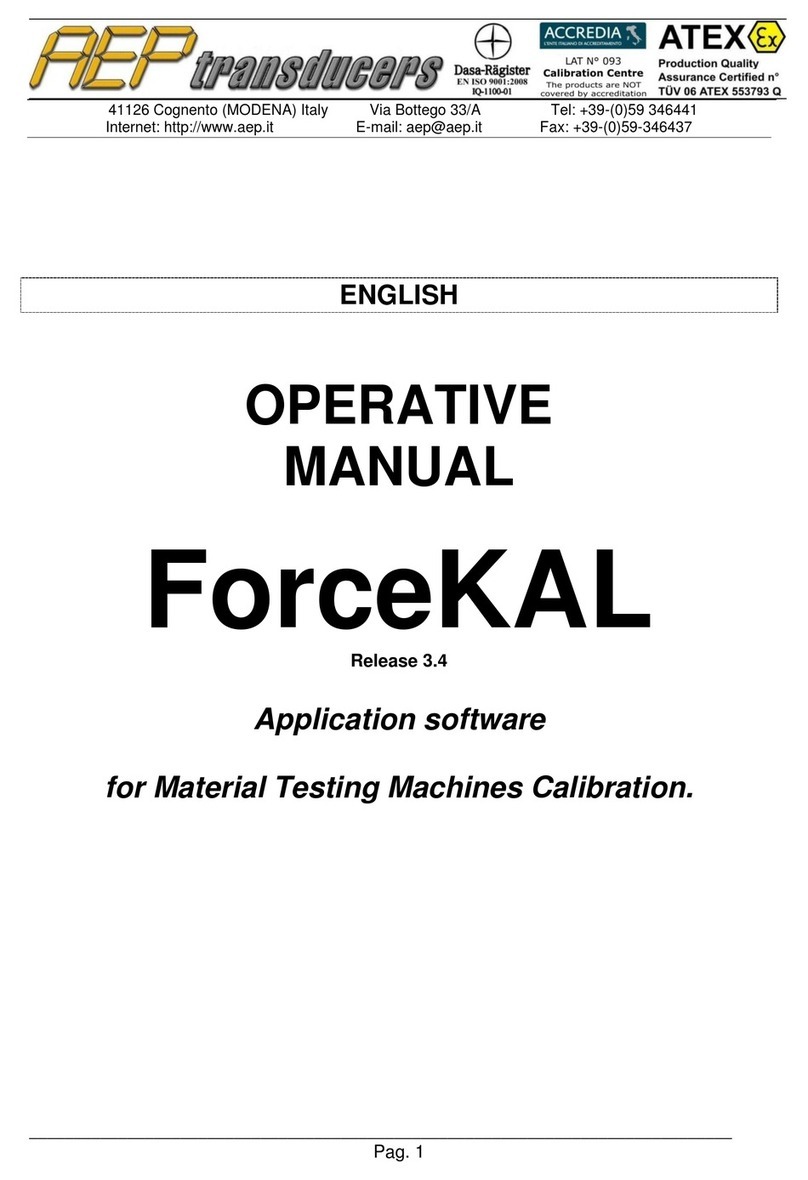
AEP transducers
AEP transducers ForceKAL Operative manual
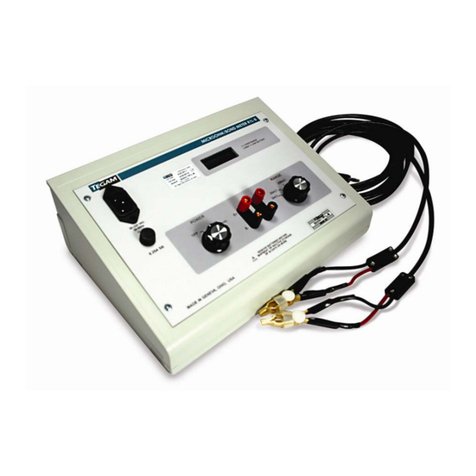
Tegam
Tegam R1L-B instruction manual

Eastern Energy
Eastern Energy 840063 instruction manual

NIEUWKOOP
NIEUWKOOP EC-95 quick guide
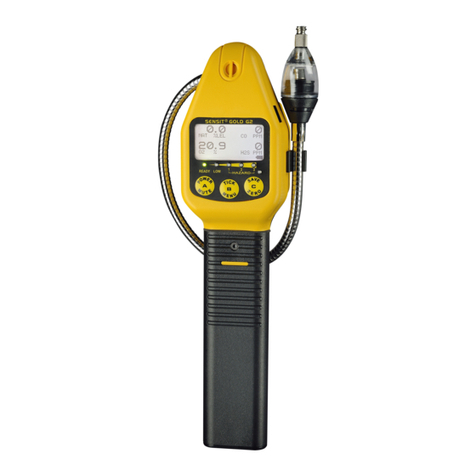
SENSIT Technologies
SENSIT Technologies SENSIT GOLD G2 Quick start instructions

Teledyne Lecroy
Teledyne Lecroy MDA800A Getting started guide
